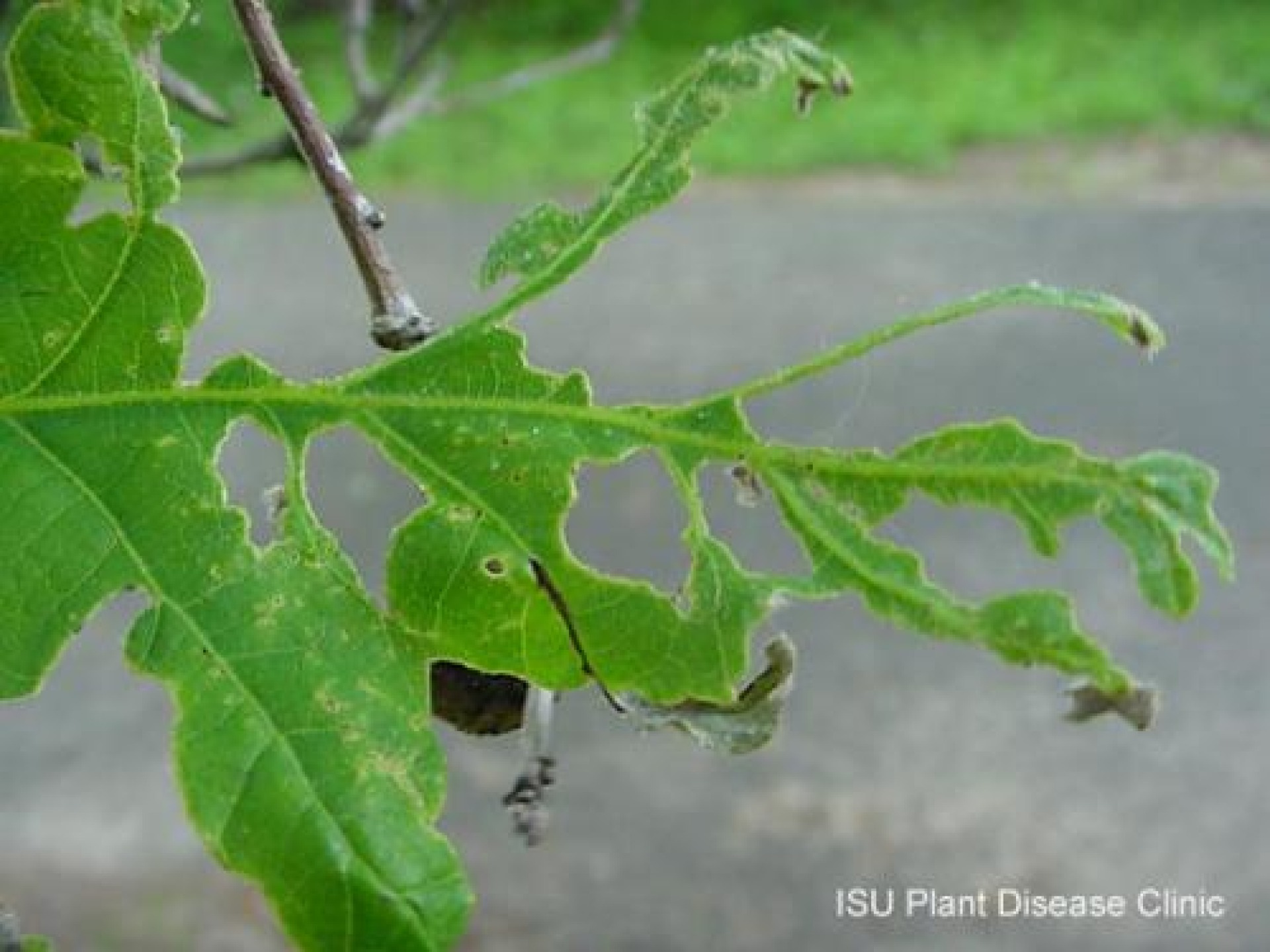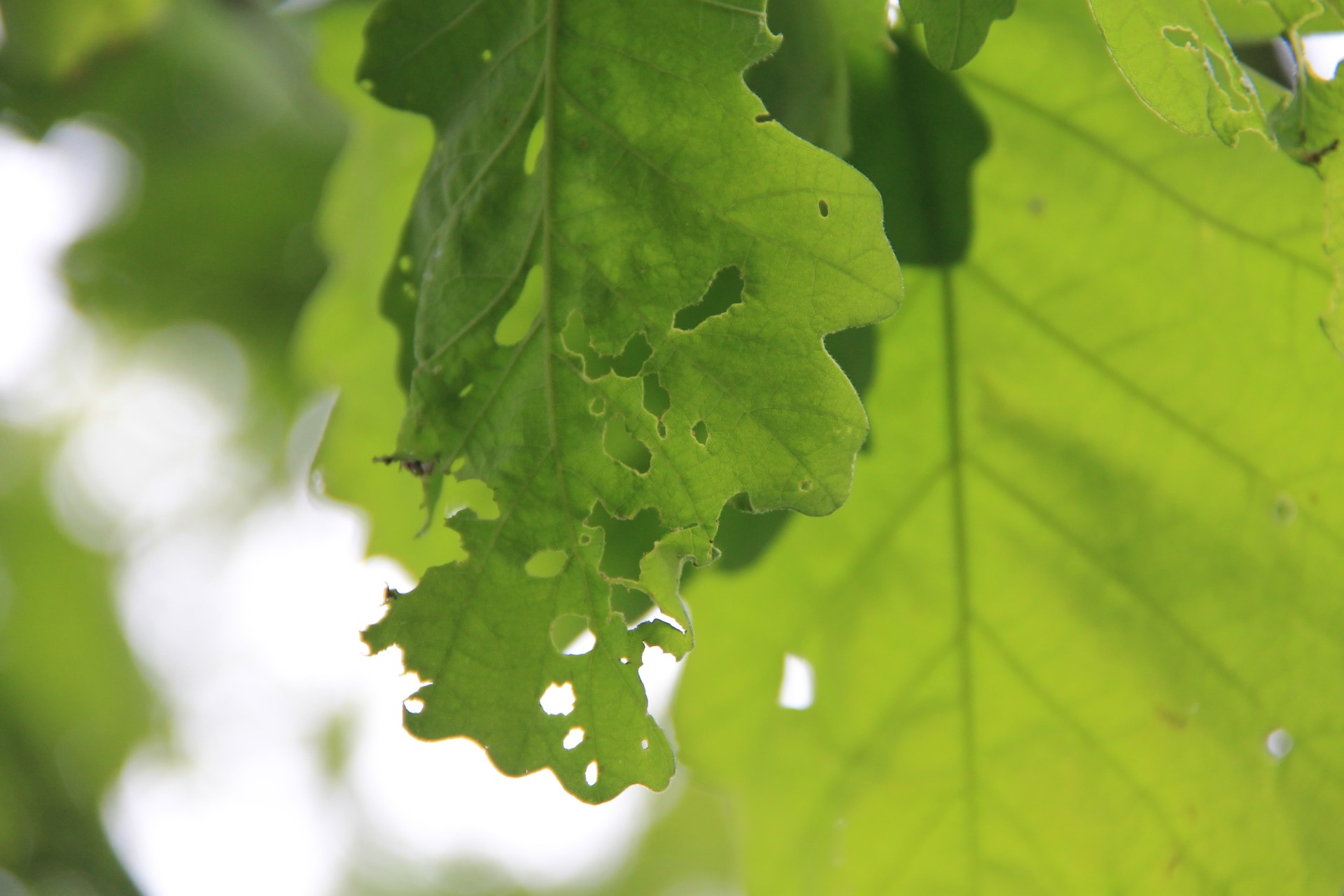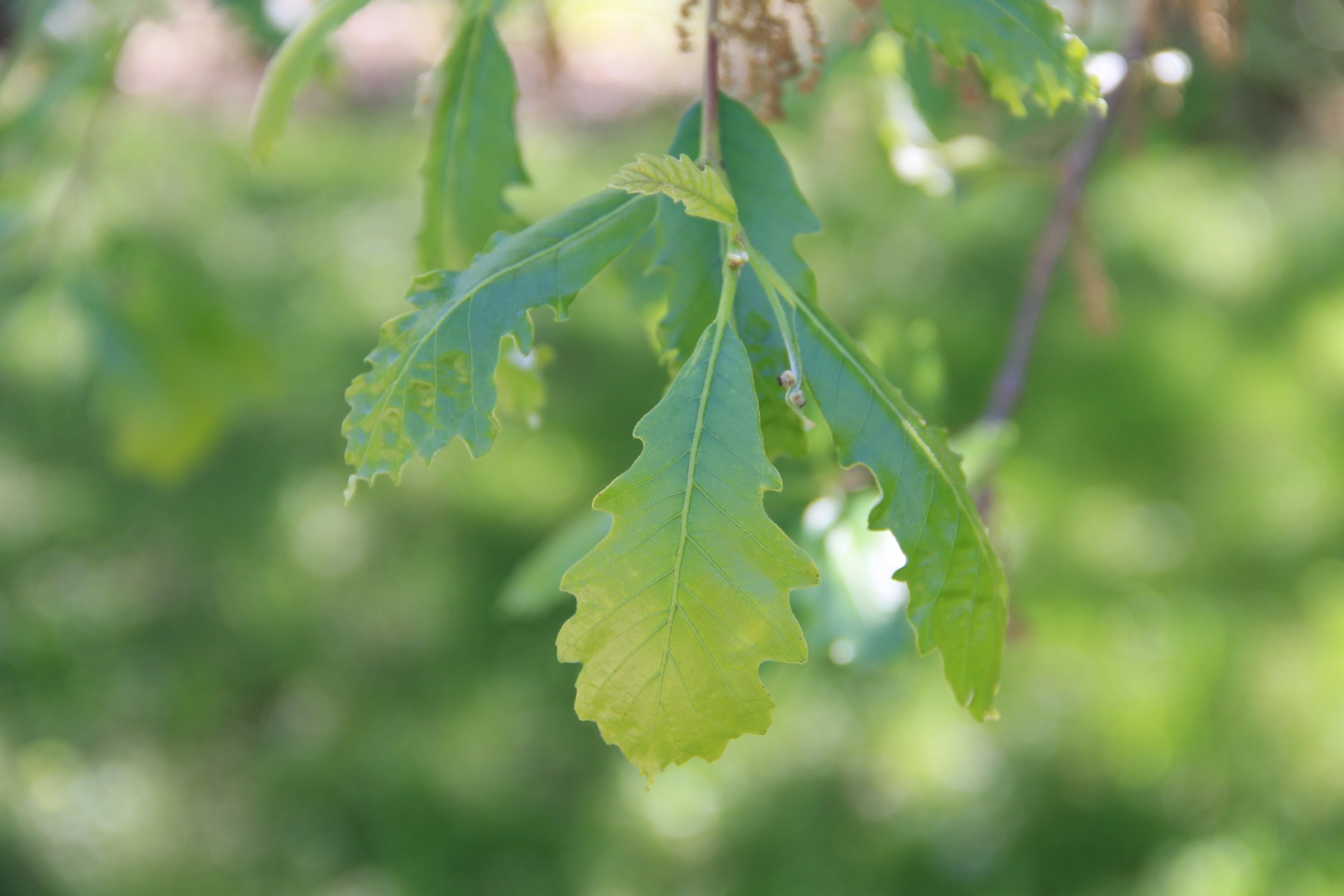These popular topics are heating up. Explore today's most viewed pages.
If you have been out on the trails in years past you may have noticed how beat up or “tattered” the leaves looked. They appear to be a skeleton of a leaf with veins but no interveinal tissue. This condition is called “oak tatters”. This condition was first observed in the 1980’s and is now present in at least 8 states throughout the Midwest.


What causes tatters?
The cause of oak tatters is not a widely researched topic but a 2004 study at the University of Illinois linked tatters to group 15 herbicides also called Chloroacetamides.
Common herbicides in this family include:
Acetochlor is a widely used preemergent herbicide used on cornfields and has recently grown in popularity in bean fields. It can persist in the soil for up to three months and is regularly found in watersheds of farm fields it has been applied. The Silver Creek in central Minnesota is on the state’s impaired waters list due to high levels of acetochlor. Acetochlor can also easily volatilize and is found in the atmosphere. According to an EPA usage report between 1997 and 2001 over 32 million pounds of acetochlor were applied in the US.
In the 2004 study, metolachlor, acetochlor, and dimethenamid were sprayed on oak seedlings during the initial growth of the leaf. Oak tatters occurred at rates as low as 1% of the label recommended application quantity for these three Group 15 herbicides.
In 2007, foresters with the Iowa DNR conducted an observational study. Tree pollination bags were placed over branches of bur oaks in April as the leaves were first forming. The tree developed tatters on all leaves except those covered by the pollination bags. The concentration of the herbicide acetochlor in the air at the site was observed between April 10 and May 18. The highest concentrations of acetochlor coincided with the development of tatters in the oak leaves. The unprotected leaves had up to 10 times higher concentrations of acetochlor than those protected by the pollination bags.
Why are the oaks at Hitchcock providing so much shade this year?
These studies suggest that oak tatters is at least partially due to concentrations of certain group 15 herbicides in the atmosphere at the time of year oak leaves are most at risk.
Let’s think about the weather patterns this spring:
My great-grandpa would always tell me, “Look for morel mushrooms when the oak leaves are the size of a squirrel’s ear.” I love looking for morels so I have always tried to be in tune with this advice (because it’s almost always correct). I found my first morel on May 5th this year. It just so happens that when the “oak leaves are the size of a squirrel’s ear” is also when they are most at risk of tatters.
According to the National Weather Service we had .72 inches of rain on April 29th and 1.39 inches on May 2nd, followed by .89 on May 5th. This weather pattern made it virtually impossible for farm fields to be sprayed with these herbicides and this year we have virtually no signs of tatters.

Why do oak tatters matter?
Although no direct death of an oak from tatters has been observed, a tree with tatters must produce a second flush of leaves, which takes a huge investment of root reserves. This stress can lead to further damage from drought, insects, and fungal infections that may also contribute to tree death.
Bur oaks have always carried a special place in my heart and that love is carried on my sleeve (tattoo). Oaks may not be as charismatic as bald eagles and other birds that were affected by DDT, but oaks deserve our respect and tatters needs more research. As a keystone species in ecosystems here and around the world, oaks provide resources for 1,000’s of species of birds, invertebrates, reptiles, microorganisms, lichens, fungi, and even shade-seeking hikers.
"...They are the best tree genus in North America for supporting the food web that supports birds, the insects they eat and thousands of other species. They also capture more carbon than other trees and hold more rainwater on our properties than other plants. I wrote The Nature of Oaks because people don’t know that. They think oaks are 'just another tree.'"
— Doug Tallamy, Entomologist, author, and professor at the University of Delaware
Read more about how important the mighty oak is to our ecosystem.